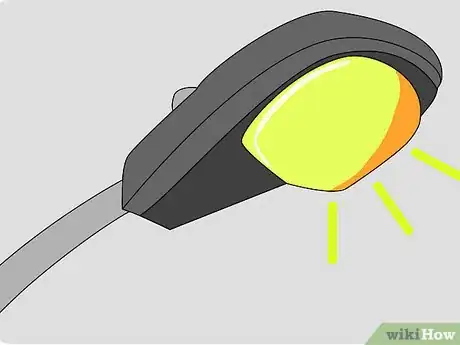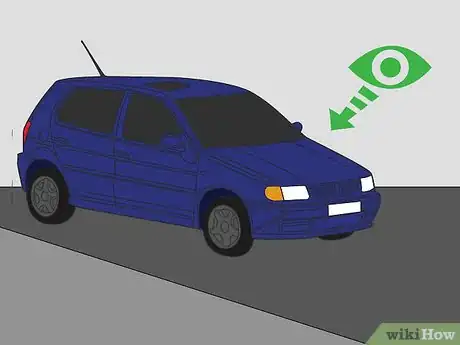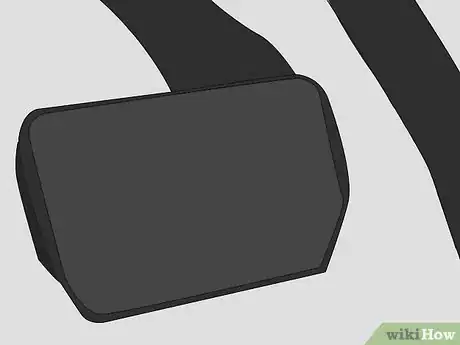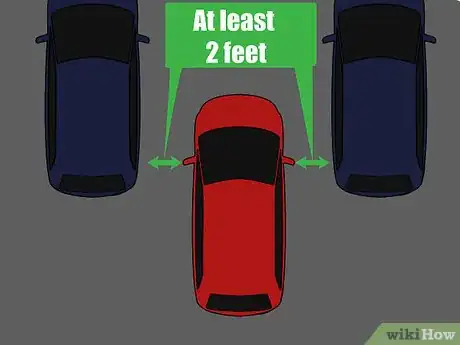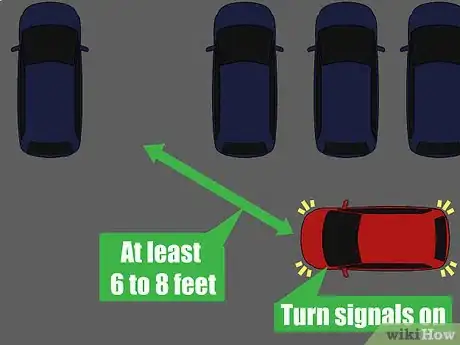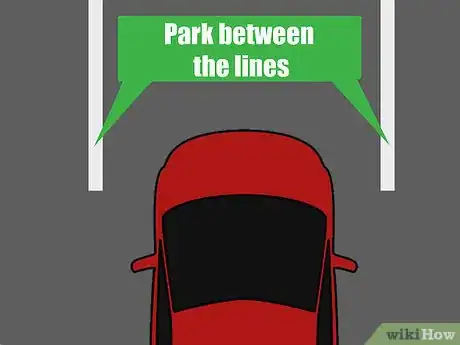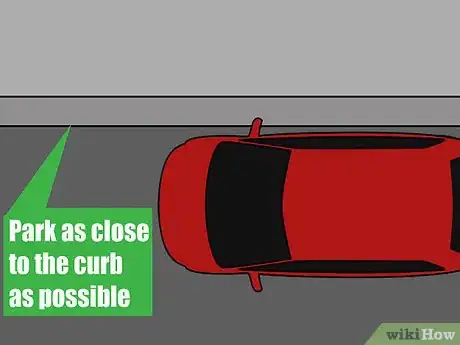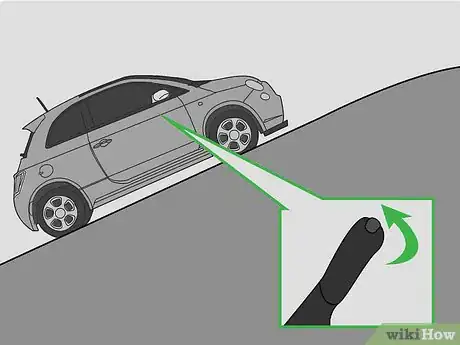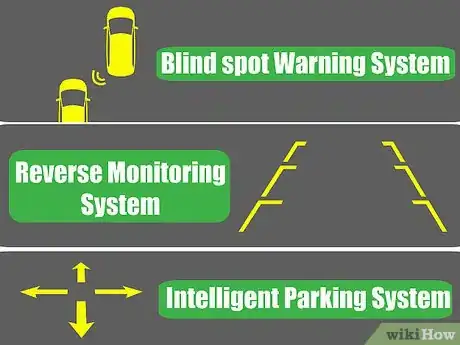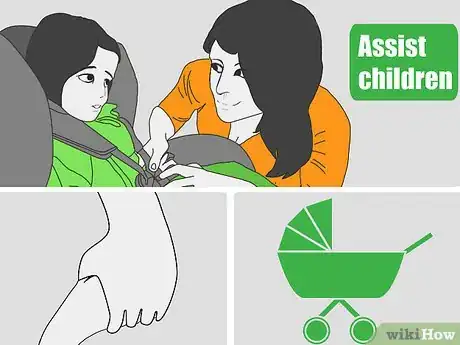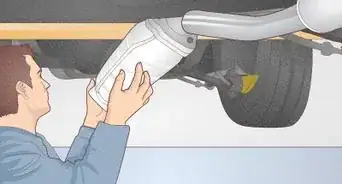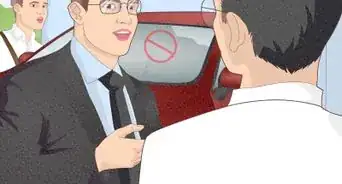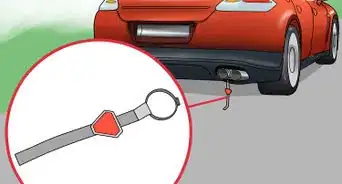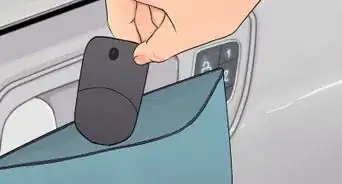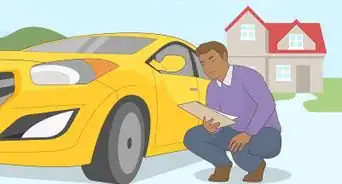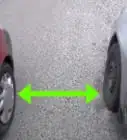This article was co-authored by Ibrahim Onerli. Ibrahim Onerli is a Driving Instructor and the Manager of Revolution Driving School in New York City. His mission is to make the world a better place by teaching safe driving. Ibrahim trains and manages a team of over eight driving instructors. He specializes in teaching defensive driving and stick shift driving.
This article has been viewed 38,711 times.
The world is a dangerous place. Being careful about where and how you park is a critical factor in preserving your personal safety. To park safely, you need to find the right location to park in and be sure to execute your parking carefully by pulling into the spot with caution. Never park where it is illegal and always look for safe areas with plenty of people around. Make sure to focus only on parking and not allow any distractions. This will ensure safety for you, cars around you, and pedestrians.
Steps
Choosing a Safe Location
-
1Park in a well-lit area. If you are parking at night, be sure to park in a well-lit area that is as close to your destination as possible. Look around for any dangerous looking people nearby. If you feel unsafe, don't park there. Just keep on driving and consider coming back another day during daylight hours.
- You could also look for a different parking lot or a parking garage that has better lighting. Or you can go to a well-lit store, like Walmart, that has lots of lighting and built-in security.
-
2Choose an area that has people around. If you park your car off the beaten path, it will be more of a target. Choose a place where there will be people walking around. Look for an area where other cars are parked as well.Advertisement
-
3Find a legal spot. Make sure the place you wish to park is a designated parking area. Look for any signs that might indicate otherwise, such as a No Parking sign. Look for printed lines on the pavement that indicate that a spot is for parking.[1]
- Never park in a disability spot unless your car has a disability symbol on its license plate or rearview mirror.
- Never park on a sidewalk or in front of a fire hydrant.
- Never block a driveway or park too close to an intersection
- Never park where you will block the flow of traffic.
-
4Make sure your vehicle will be visible. This will help to prevent crime. Many parking lots and garages have security cameras. Make sure your car is clearly seen from several angles. Avoid parking next to a large truck or in between two vehicles that block the line of sight to your car.
-
5Avoid parking at the end of a row. Your car will be more likely to be hit by cars driving by if it is at the very end of the row. Especially avoid parking after the end of the row in a crowded area. For example, if the lot is full, cars will sometimes make their own space next to the last designated parking spot. But this is ill-advised because your car will be more likely to get hit, get ticketed, or even get towed because it isn’t a legal spot.
- Avoid parking next to a cart storage area at a grocery store. Your car might get a dent from a cart.
-
6Be prepared to pay. Some parking garages or city streets require payment to park there. Take note of this as you are choosing a spot and be sure you have the money to pay. Sometimes you will need to pay ahead of time, like with a parking meter, and other times you will pay when you leave, like when leaving a parking garage. It’s never fun to pay for parking, but it’s much less fun to get a ticket or get your car towed!
- Sometimes you can pay by credit card, but other times it requires cash or coins. Be sure you have the appropriate payment method available.
Pulling In Safely
-
1Carefully enter the parking lot. Observe its activity. Drive slowly and pay attention to other vehicles and pedestrians.
-
2Be prepared to suddenly stop. A pedestrian could walk in front of you or another car could back up. This is why it is important to move slowly and proceed with great caution.
-
3Focus solely on parking. Do not check your phone or turn around to look at your kids while parking. 20% of accidents occur in parking lots, so it is important that parking have your undivided attention. Once your car is safely in its spot, you can deal with anything else.
-
4Choose a spot with enough space. Don’t try to squeeze your car into a tight space because you could hit the car beside you, ding their door, or they could hit your car. Look for a spot that will allow for at least two feet on both sides of your vehicle.[2]
- If there aren’t too many cars in the parking lot, leave a few spaces between you and other cars.
-
5Prepare to pull in. Stop your car 6 to 8 ft away from the spot. Slowly come to a halt and turn on your turn signal for 3 seconds when coming to your spot. This will show other cars that you are turning and will give you a chance to check the area around you for traffic and pedestrians.[3] Only begin to move into your parking space after you have carefully looked at the area around you and signaled to other drivers that you will be parking.
-
6Park in the lines provided on the parking space. Carefully position your vehicle within the given space. Make sure your vehicle is in the middle of the space and not too close to either line.
- If you have an over-sized vehicle, then consider taking up multiple spaces so that your vehicle is not in the lane of the parking lot. This is a problem with many larger trucks and SUVs. You could park in additional spaces by parking perpendicular to the parking spots.
-
7Park as close as possible to the curb on a road. Anytime you are parking on a street rather than in a parking lot, be sure to pull over as far as possible. This is especially important when parallel parking. Try to park as close to the curb as you can so that your vehicle will not be hit by cars driving by.[4]
- If it is a busy road, exit your vehicle on the passenger side of the car rather than into traffic.
-
8Use your car’s safety brake when you park on a hill.[5] This will keep your car from rolling. You should also turn your tires diagonally so that it won’t move. When parking uphill, turn your front tires away from the curb; when parking downhill, turn your front tires towards the curb.[6]
-
9Know how to park in all situations. You should be comfortable parking at an angle, parallel parking, and reversing your car into a parking spot. There are situations where these skills will be necessary, so be sure to practice ahead of time.
- To get comfortable with these skills, you could go to an empty parking lot and practice. If the parking lot doesn’t have these types of parking spots, you could set up your own with cones.
- For parallel parking and reverse parking, it is especially important to check all of your mirrors and your blind spot to ensure you won’t hit any cars or pedestrians.[7]
-
10Use safe parking technology. Cars are starting to come with tools to help you park safely. If your car has technology like a Blind Spot Warning System, Reverse Monitoring System, or an Intelligent Parking System, make use of these. They can help you to safely pull in and out of your parking spot without hitting anything. Be sure to heed their warnings and respond accordingly.
Leaving Safely
-
1Remove valuables from your car. This will help to prevent theft and break ins. If you leave money or your purse or laptop on the seat, this will tempt people to steal it. Your car should look boring and like there is nothing of value inside.[8]
-
2Open your vehicle's doors carefully. Be careful not to hit another person's vehicle with your door as you exit your vehicle. You can make this much easier by leaving enough space in between you and the cars next to you.
-
3Lock your car securely. Make sure that all doors and the trunk are locked after you leave. This will protect your car.[9]
- If your car has a security system, be sure to activate it. It will sound if anyone attempts to break in.
-
4Supervise young children as they exit the vehicle. Accompany them by either carrying them, pushing a stroller or holding their hand as you leave the car. They will need help safely navigating the parking lot.
-
5Reverse your car carefully. To pull out of the parking spot, you may need to reverse your car. Be sure to reverse your car very slowly and only after checking your mirrors and your blindspot. To reverse, turn your head around and look behind you while maneuvering your vehicle. Wait to begin turning your car out of the space until the front of your car is out of the spot so that you don’t hit the car to your side.[10]
- Driving in reverse is when many accidents occur and when you are most likely to hit a pedestrian.
- When reversing, you do not have the right of way! Let other cars and pedestrians move first.
- Use your turn signal to show which way you will be pulling out. Signal for at least 3 seconds.
Expert Q&A
-
QuestionWhat's the safest way to back into a parking spot?
 Ibrahim OnerliIbrahim Onerli is a Driving Instructor and the Manager of Revolution Driving School in New York City. His mission is to make the world a better place by teaching safe driving. Ibrahim trains and manages a team of over eight driving instructors. He specializes in teaching defensive driving and stick shift driving.
Ibrahim OnerliIbrahim Onerli is a Driving Instructor and the Manager of Revolution Driving School in New York City. His mission is to make the world a better place by teaching safe driving. Ibrahim trains and manages a team of over eight driving instructors. He specializes in teaching defensive driving and stick shift driving.
Driving Instructor Make sure there are no vehicles behind you as you reverse back toward the spot. Check your mirrors frequently and look over your shoulder to make sure it's all clear.
Make sure there are no vehicles behind you as you reverse back toward the spot. Check your mirrors frequently and look over your shoulder to make sure it's all clear.
Warnings
- Don't get into an argument with a fellow patron. If there is an accident involving hitting someone's car with your door or vice versa, just be open and honest with the other party and cooperate fully with them to resolve the situation. Remember the golden rule to treat your neighbor as you would like to be treated.⧼thumbs_response⧽
- Never assume that a vehicle will stop if you are in the road. It is surprising how many people just don't care.⧼thumbs_response⧽
- Always put safety first.⧼thumbs_response⧽
- Watch out for any suspicious activity. You don't want to be held up in a parking lot.⧼thumbs_response⧽
References
- ↑ http://www.sdt.com.au/safedrive-directory-PARKINGTIPS.htm
- ↑ http://www.sdt.com.au/safedrive-directory-PARKINGTIPS.htm
- ↑ Ibrahim Onerli. Driving Instructor. Expert Interview. 18 November 2019.
- ↑ http://www.nzdriving.com/road_code/how-to-park-safely.php
- ↑ Ibrahim Onerli. Driving Instructor. Expert Interview. 18 November 2019.
- ↑ http://www.nzdriving.com/road_code/how-to-park-safely.php
- ↑ Ibrahim Onerli. Driving Instructor. Expert Interview. 18 November 2019.
- ↑ http://www.sdt.com.au/safedrive-directory-PARKINGTIPS.htm
- ↑ https://www.nationwide.com/smash-and-grab.jsp
